Here's what I think are the bare essentials for general modelling, won't break the bank and will allow you to do a great deal:
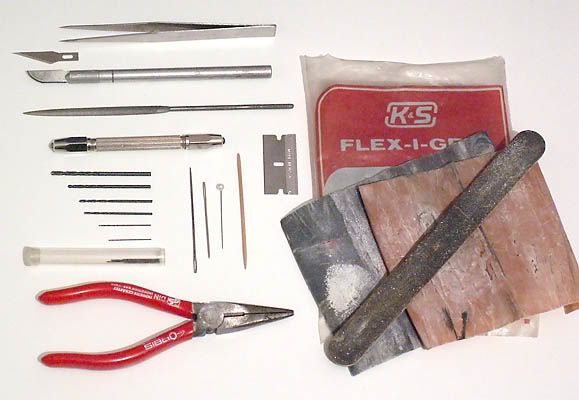
One decent tweezers. A good craft knife, an X-Acto or a clone - much stronger blades than a scalpel and much more secure fitting to the handle; two blade types, the classic #11 at top and a #10, which I think is the best all-round shape if you had to have only one (buy your blades in 100s, it's well worth it). One needle file - a half-round is the most versatile as it has a decent edge, one flat face and a curve for doing inside diameters. A double-ended pinvice, each side with reversible chucks to hold a range of sizes - this is for drilling by hand of course but also for holding pinned parts during sculpting and painting. A small range of bits of small diameters. A couple of needles/pins and a shaped cocktail stick - for basic putty shaping on filled joints etc. A single-edged razorblade - good for lifting rolled-out putty blanks, scraping up dried paint or glue and many other uses. A basic pair of pliers - for holding things of course but the wire-cutting part near the hinge is essential if you want to be able to easily cut paperclip wire. Abrasive film & sticks - polyester sanding films are much longer-lasting than wet-or-dry paper so they're a good investment, mine are twenty years old, but either will work fine (normal sandpaper I'd leave for sanding wood) and one of the newer double-sided emery boards which are actually made with very good abrasives.
Once you're sure you'll stick with the hobby you'll want to build up your toolkit a bit:
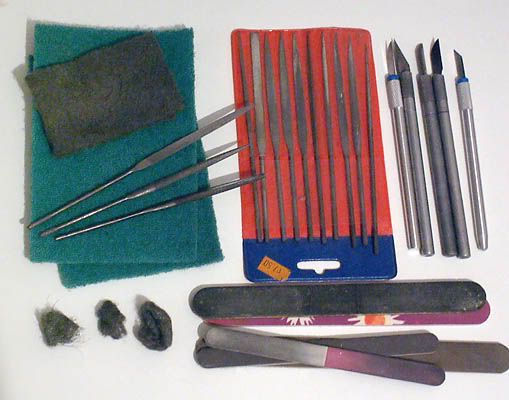
Scotchbrite or nylon scrubbing pads - for roughening up surfaces as well as some basic shaping. Steel wool - three grades, 0, 00, and 0000 (0000 grade is like cotton-candy, it makes a lot of steel filings when used but it's very useful for final buffing to remove scratches so well worth hunting down). At least one more half-round file is nice, so you don't dirty up resin or putty with white-metal residue! Also needle files vary a huge amount in how well they cut without leaving scratches so you might buy a couple just to try them out; as far as I know there's no way of judging purely by appearance how good one is, the best I ever had was the cheapest. A full set of needles files - including the second-best shape, the rat-tail (round) for small inside diameters; marquise, flat, triangular and oval are all nice to have every now and again too although not essential at all. More X-Acto handles - so you don't have to change blades as you work; I also think it's good to have old, blunt blades for trimming putty on the model's surface without easily leaving a mark (safety note: don't get into the habit of using them for carving or cutting - as the conventional wisdom says, sharp blades are safer). More emery boards - additional grades, including the buffing type added too, if you ever want to polish the surface of resin and putty.
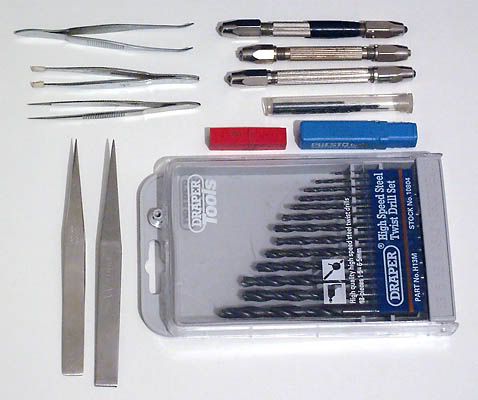
More tweezers - I've collected more than these over the years and quite frankly I hardly ever use any of them but they're useful for the occasional jobs only they can do. More pinvices - you can never have too many

I'll probably end up with a dozen before I'm done. A wider range of drill bits.
Motor drill. Okay, you
can live without one of these but for what they do easily, and quickly, they're a really good investment so if you have the money I would highly recommend getting one; once you come to rely on it for certain tasks you'll wonder how you lived without it before! If at all possible get a power supply that will allow you to take the speed right down - from 0 RPM up would be great - low speeds are vital for working with plastics without melting them and for drilling white metals safely.
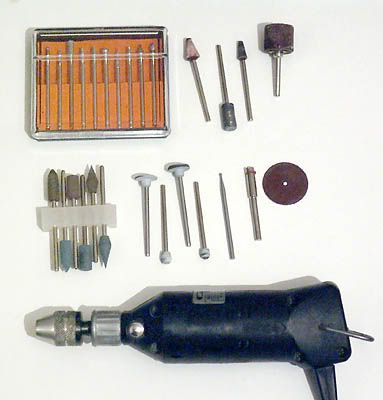
Diamond cutters - for finer shaping of resin and hard putty. Don't use these on white metal except at very low speeds or they'll become coated in metal and useless (you can see this a bit on the abrasive cutters to the right) for working with casting metals cutter heads are probably the best bet. Ginding stones - for rough shaping of resin and putty. The brown, blue and white bits below these are silicon rubber abrasive heads, originally intended for polishing metals they're very useful for smoothly shaping softer materials (round tips, or wheels worn down to nubs, are extremely useful for abrading small convex areas, something that is practically impossible to do otherwise). To the right of these is a slitting disk (or cuttoff wheel) - a thin disk of abrasive material which you can use to cut the heads of nails or cut through tough wire if you don't have a bolt cutters.
Here's a nice starter set of bits. Widget Supply are also a good source for the whole range of accessories for a Dremel as well as other tools.
Sculpting tools:
The two double-ended tools on the left are wax carvers - I've come to do 95% my sculpting with these but it's worth trying a range of things for yourself, see what works best for you. To the right of these are three needle-like tools; the one in the middle came with a knife kit, no idea what its intended use is but the longer handles help me not to get cramps in my hands when sculpting for long periods so I now use these in place of needles and shaped wooden tools most of the time. The tips of the ones on the left and right I made myself, from nothing more sophisticated than nails (try doing that without a power tool :lol

one is needle-sharp, the other a rounded blunt. At the top is a fibreglass eraser - useful for cleaning metals prior to glueing and for gently abrading the surface of putty. Below this are shaped wooden tools - you can make a wide variety of tools from nothing more than cocktail sticks, abrasive paper and superglue and since they're so easy to make there's no reason not to make a wide selection; old brush handles are also a good source of wood for larger ones. Below this a range of needles or pins are useful for scribing lines and pressing in fine linear detail. The cream plastic tools are originally cheap sculpting tools for ceramics. Bottom is a silicon-rubber Colour Shaper - I bought one to try, but I find I don't really have much need of it for sculpting. The red plastic tools on the right are scraperboard tools (again, why have only one handle when you have four different cutting heads?

) the knife-like ones are very much non-essentials but the one second from left is a small gouge, which I couldn't live without for, well, gouging!
Einion


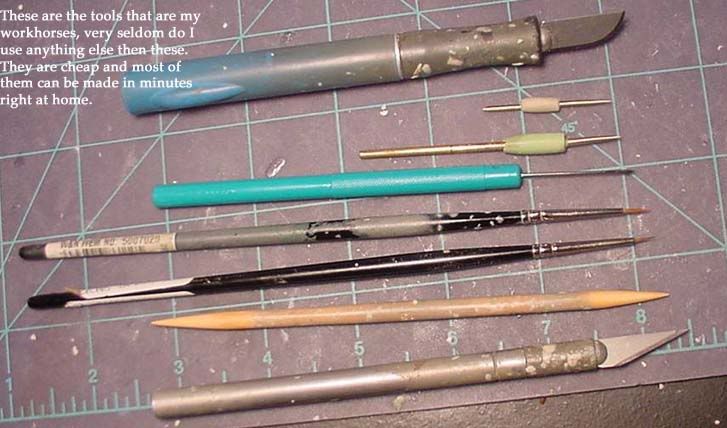
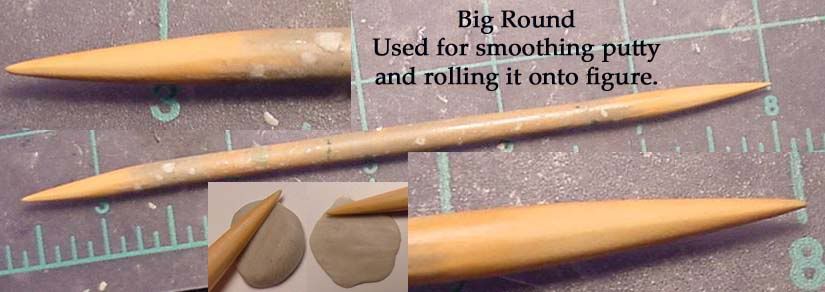
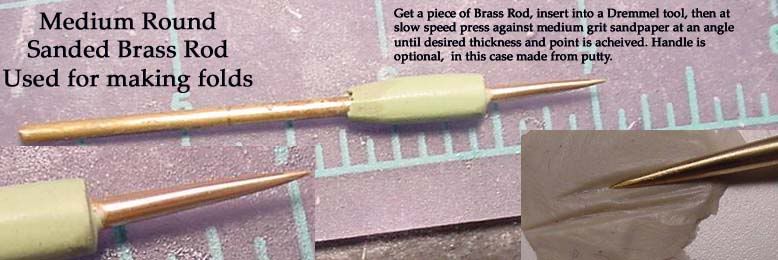
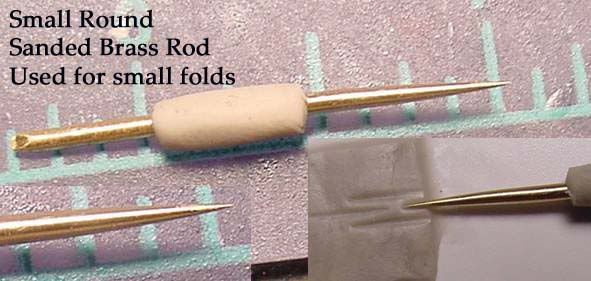

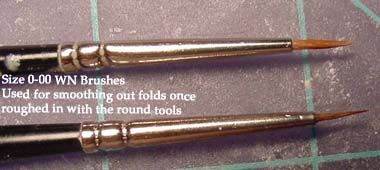
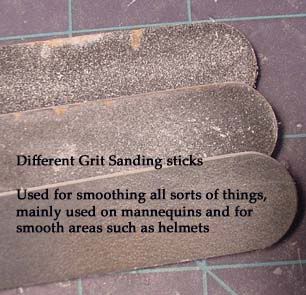
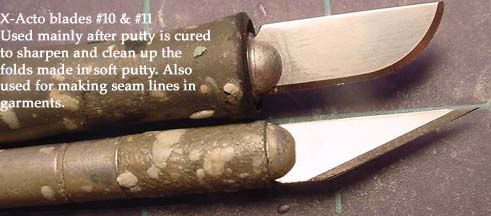
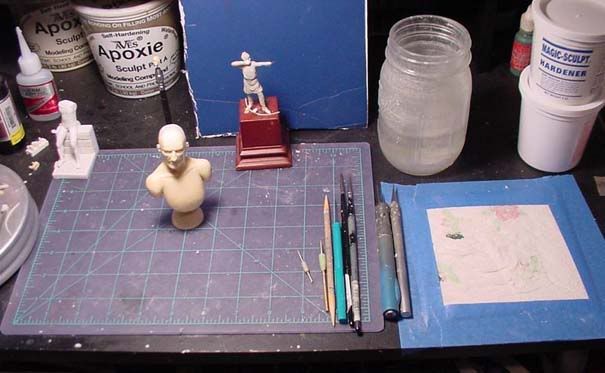




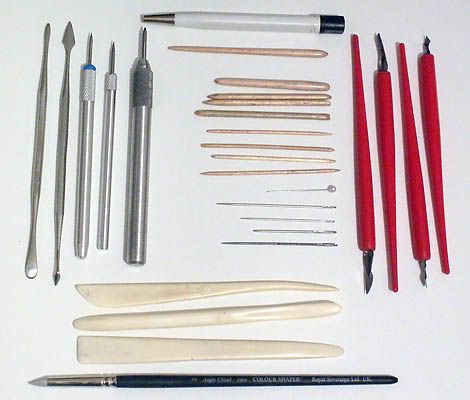

 :lol:
:lol: